Because I am so far behind on these reviews, I will not be reviewing everything in my usual (and still not really adequate to be called a review) way. Instead, some titles will be mentioned and not reviewed. Then maybe I can catch up to where I’m at in the year. In February, I read or watched: 18 books (The Evocative Object World; Mourning and Melancholia; Mourning Diary; Hope Without Optimism; Slime; Wanderlust; Life in the City of Dirty Water; There There; Alphabetical Diaries; Either/Or; Diary; Trailer Park Shakes; Be Holding; Love’s Last Number; Best Canadian Poetry 2024; O; I Am Only a Foreigner Because You Do Not Understand; and We Are On Our Own); 3 movies (The Zone of Interest; The Dark and the Wicked; and Night Swim); and 6 documentaries (Fine Lines; Lover Stalker Killer; The Other Side of the Wind; Life Overtakes Me; The Soul in Peril; and Fungi).
BOOKS
1. Bollas, Christopher. The Evocative Object World (2009).

A collection of loosely related essays, I can’t say that I enjoyed this book as much as Bollas’s earlier more sustained works. However, I did like what he had to say about free association, character as the self (or our selves, really) engaging in form-making, waking as a kind of meandering that encourages free association, and the ways in which objects “relate back” to us and so places, like cities, develop their own “personalities” or “spirits” or “vibes.” Bollas continues to be one of my favourite writers to read because I find him so fun to think with. His creativity inspires my creativity, his imagination sparks my imagination, and, more and more, I am drawn to writers how have this kind of impact on me.
2. Bollas, Christopher. Mourning and Melancholia: Life in the Age of Bewilderment (2018).

A disappointing read, given my enthusiasm for Bollas’s earlier work. Still good but too short, rambling, and over-priced. I would engage in more detail but, you know, I’m four months behind here.
3. Barthes, Roland. Mourning Diary (2010 [2009]).
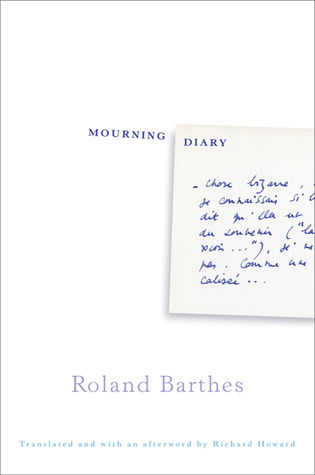
Roland Barthes’ mother died after an extended period of time during which he cared for her. For a few years afterwards, he jotted notes related to his mourning on various pages or post-its. Not a formal diary or a more developed series of reflections that became part of his published oeuvre, these notes were eventually collected into a volume that became this Mourning Diary. Given how much time I spend mourning these days—I have personally known approximately 300 people who have died in the last 3 years due to the ways in which neoliberal governance, austerity, and the rapacious hoarding of stolen wealth and land generates surplus populations who, if they cannot be transformed into human capital, are discarded as human waste—I thought I would give it a read. I found it occasionally moving and generally soothing, even if just as a distraction that didn’t require a great deal of focus in order to engage it. One thought, related more to fear than mourning, has stayed with me since I finished it. Drawing on the work of D. W. Winnicott, Barthes argues that a great deal of our fear is fear of an overwhelming catastrophe that has already happened and that cannot be repeated again. I’m still working out how I feel about that and how it relates to my own fears and what I do or don’t do with them.
4. Eagleton, Terry. Hope Without Optimism (2015).
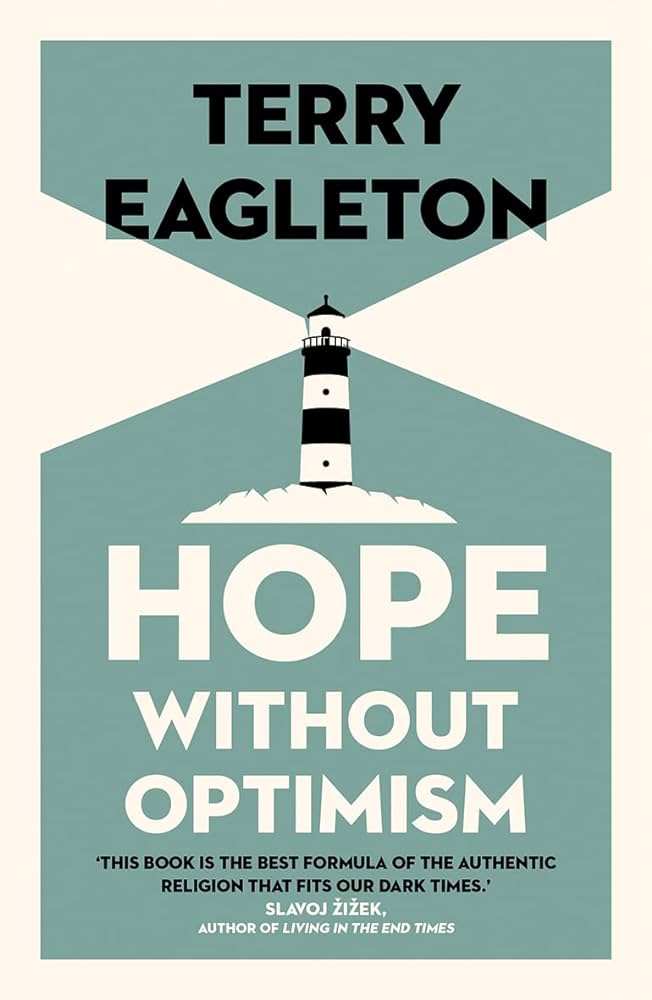
When I was in my early twenties and still rooted within Christianity, albeit in the “liberation theology” and other forms of Christian socialism, communism, or anarchism, Terry Eagleton seemed like a really rad voice in critical theory. He was an unapologetic Marxist in a post-Foucauldian theoretical terrain that didn’t love Marxists all that much anymore, he obviously know his continental philosophy, he literary criticism was excellent, and he was sympathetic to socialist interpretations of the New Testament. He was definitely a key stepping-stone along the way for me in my own development. I hadn’t read anything by him in around 20 years but I did get curious about his lecture series turned book, Hope Without Optimism. I have a very chequered history with hope. Jürgen Moltmann’s theology of hope (which runs throughout all of his work but which also was the title of his break-out work) paired with others who wrestled very seriously with both hope and hopelessness (notably, Jacques Ellul’s Hope in Time of Abandonment) were early influences on me and, of course, the power of hope has always been a strong element in any uprising of the left-for-dead. In struggles for life and liberation, the abandonment of hope is often taken to be a precursor to total defeat and resignation unto death (I am reminded of a quote from Studs Terkel’s interview with Jessie de la Cruz, a retired farmworker; de la Cruz says, “La esperenza muera última. Hope dies last” because, as Terkel goes on to paraphrase de la Cruz, “If you lose hope, you lose everything”; cf. Hope Dies Last).
And yet… and yet in many ways hope seems increasingly untenable. Not only that but, especially since the Obama administration ruled the lands occupied by the United States, hope has been weaponized against those who most desperately require change in order to live the kinds of lives they desire to live. Hope is encouraged but carefully channelled into avenues that will not create change, that will, in fact, further entrench us within the every more brutal trajectory of the death-dealing status quo. Thus, hopes are dashed, disappointed, and betrayed. If you have relied on hope to survive, the betrayal of hope becomes, itself, one more of the elements that are devastating you. Hope, as Lana del Rey sings, is a dangerous thing for some people to have (https://www.youtube.com/watch?v=q1gZZdwtWJ0). I see the truth of this every day in my own efforts to pursue mutually liberating solidarity with all those who are oppressed, dispossessed, abandoned, and left for dead in my home town.
Consequently, in my own life, I have been trying to find a third option between hope and despair. To be neither hopeful nor hopeless, so that I can continue to act, continue to struggle, continue to continue, continue to live a life that reflects the values I have and the beliefs I hold.
Eagleton reframes this slightly. He argues that one must neither give way to facile optimism (which affirms that everything is getting better somehow, someway, no matter what) nor to devastating pessimism (which prevents a person from being able to take action for change). Instead, he offers hope as that which allows a person to still project themselves towards a potentially better future so that they are motivated to continue to claim agency and take action in the present. That’s the gist of it, anyway. But, after all these years, his texts don’t land the same (he is, for example, much more sympathetic to Christianity than I am these days). Perhaps this is a useful text for those who are only beginning to develop their own critical praxis in relation to these things. For those already well along the way, this might fall a little flat.
5. Kissinger, Ruth. Slime: How Algae Created Us, Plague Us, and Just Might Save Us (2019).
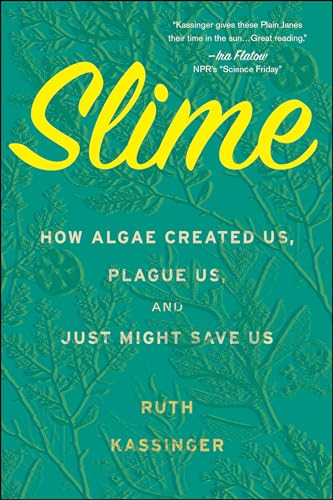
Some science books are really fun and fill you with wonder about things as they are in the world as it worlds. Other science books give you only a small taste of that excitement before quickly filling the rest of their pages about hose those things out there in the world can be used and consumed by humans (while also providing all kinds of biographical details about the humans who paved the way for us to use and consume those things). Sadly, this book about algae is of the latter type. The first forty pages are dope. The remaining two hundred pages are nope.
6. Solnit, Rebecca. Wanderlust: A History of Walking (2000).
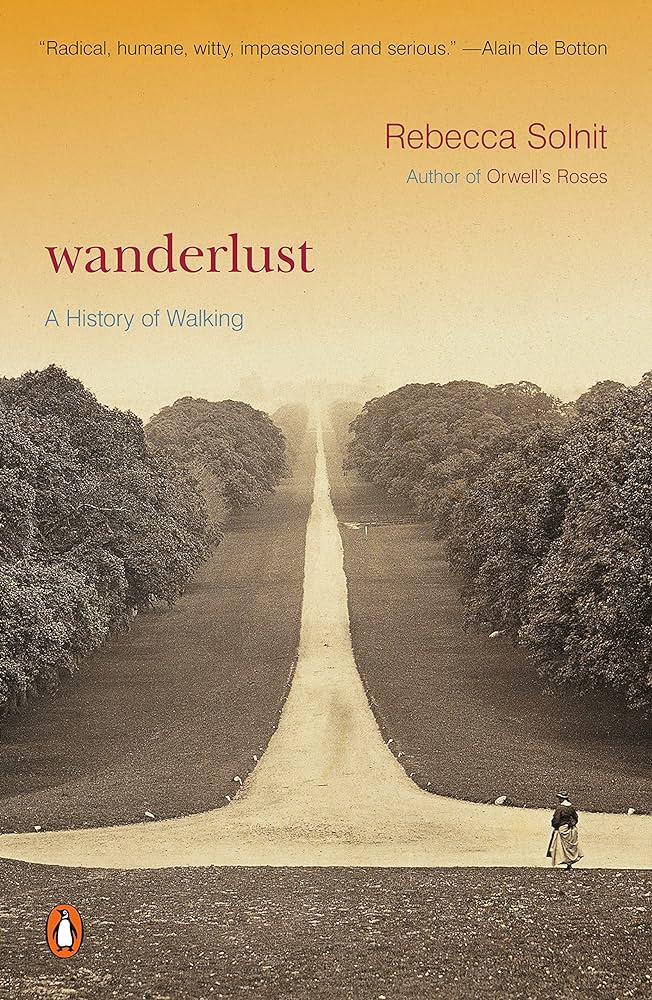
It’s May and I finished this book in February… I remember being happily surprised by it. I thought the theme of walking kinda popped off in memoir-style lit post-Sebald and MacFarlane but had to check my assumptions at the frontispiece because this book actually came out in 2000. I have complicated feelings about Solnit. She writes some fantastic books about critical themes and do so with wit and thoughtfulness and a cutting grace. I think I’m jealous. Or envious. I have to think more about those things and how and when and why I feel them.
7. Thomas-Müller, Clayton. Life in the City of Dirty Water: A Memoir of Healing (2021).

One of two memoirs I read this month that wrestle with what it means to be an Indigenous person in the context of a militarized settler colonization that has lasted for a few centuries (and counting), I felt like this was a very timely read (I’ve been thinking a lot about what or how counts as genuinely Indigenous or legally recognizably Indigenous or claimed as Indigenous or self-identified as Indigenous, and so on, especially in light of the recent controversy regarding Buffy Sainte-Marie and also some more theoretical works I’ve been reading like Audra Simpson’s Mohawk Interruptus, Elizabeth Povinelli’s The Cunning of Recognition, and Glen Coulthard’s Red Skins, White Masks). Clayton Thomas-Müller’s book is a caring, critical, and compelling personal examination of the complexities that come with living this experience both “on reserve” and in the city of dirty water (so-called Winnipeg) and elsewhere in his own journey across Turtle Island. I was especially struck by his remarks about how many Indigenous folks from his “rez” were connected to the land but disconnected from land and culture, whereas many urban Indigenous folks were connecting to land and culture but were disconnected from the land and this left him wondering who gets to count as Indigenous and how, no matter where an Indigenous person is situated, they are made to feel “not Indigenous enough.”
Of course, making Indigenous folks feel “not Indigenous enough” is a fundamental and multi-faceted component of settler colonialism’s project of ongoing land theft and while some, like the Wet’suwet’en, might be able to might the very narrowly defined and almost impossible to meet standards of who counts as Indigenous before the law, almost everyone else cannot after a few hundred years of colonization and genocide. And yet, because of the ways in which White folks have deployed Indigenous identifications at times when it served their interests (claiming to be Indigenous in order to steal reserve lands, to benefit from grants, to steal teach positions, to make a buck, and so on), Indigenous folks are pushed towards defending various nearly-impossible-to-meet definitions as a form of self defense. Thus, settler colonialism says it wants either a too narrow definition of Indigeneity (so that nobody qualifies and all claims to land, sovereignty, or reparations are extinguished) or a too loose definition of Indigeneity (which allows settlers to also steal that identification along with everything else they’ve stolen and finally and fully dispossess Indigenous folks of the last vestiges of what they have), and Indigenous folks are supposed to be able to find the Goldilocks’ “not too hot and not too cold but just right” standards for defining who counts as Indigenous and who does not (all while the settler state continually shifts the goalposts, redefines words, and plays all kinds of legalistic and linguistic games). Consequently, different Indigenous communities and Indigenous individuals have taken different approaches to this matter. And not all of these approaches align with each other. In fact, some of them contradict each other. And how could it not be otherwise? One key thing, for those who are White settlers such as myself, is not trying to then find some kind of universal definition (as per Eurocentric epistemologies, ontologies, and politics of conquest) that is then used to measure and police each Indigenous approach.
8. Orange, Tommy. There There (2018).

The second of two books I read in February that have to do with “urban Indigeneity,” I thought it was well written and found a way to dance around, through, and between various tropes or themes that could have been disastrous if presented in another way by another author. I think the praise for this novel was well-deserved.
9. Heti, Sheila. Alphabetical Diaries (2024).
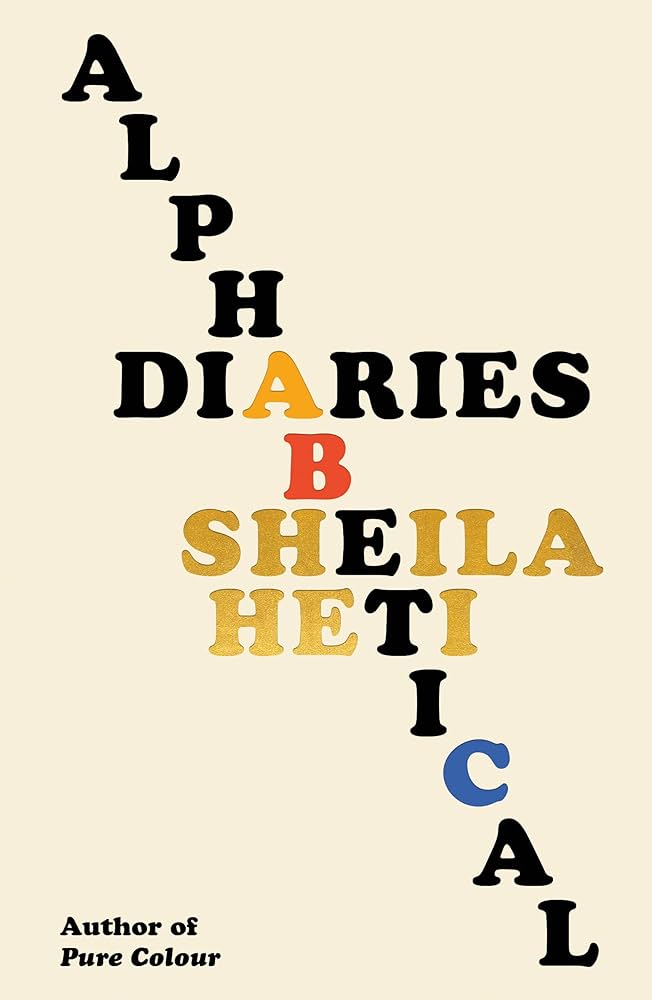
Not my favourite Sheila Heti novel and it felt kind of gimmicky… like what an otherwise brilliant and exceptionally talented author might do when she starts running out of things to say about subjects that have truly inspired her to write. Worth read because anything Heti does is worth reading but it lacks some of the… hmmmm… passion (perhaps?) that can be found in her earlier work.
10. Batuman, Elif. Either/Or (2022).
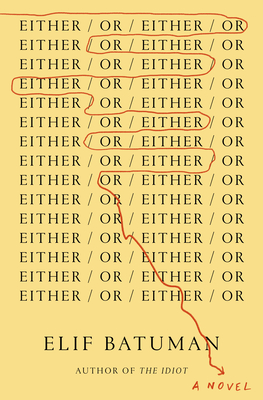
Continuing my commitment to deliberately engage a lot more female-identified authors, Elif Batuman seemed like a pretty obvious next choice given the other authors I have been enjoying and the themes they develop. It’s a smart book that’s also humourous and, in fact, enjoyable to read. I always struggle a bit with novels that are about, well, kids at rich-kid schools trying to be writers (see also books about professors at rich-kid schools who are writers) because, well, I don’t know… class war and all that… but I enjoyed this enough that I’ll likely read Batuman’s other work.
11. Palahniuk, Chuck. Diary: A Novel (2003).

If Dan Brown is the dumbed-down, less talented, everyman’s version of Umberto Eco, then Chuck Palahniuk feels a lot like the dumbed-down, less talented, everyman’s version of a mashup of Bukowski and Stephen King (I say “everyman” instead of “everyperson” because we’re talking about lit that tends to be written by men for men). It’s like King with more literary pretensions and all the casual but no less cruel misogyny of Bukowski added in. This helps me understand why the only people I ever heard rave about Palahniuk were dudes who had or have very troubling relationships to their own masculinity and very harmful relationships with women. I’m not about to rush out and read anything else by this guy.
12. Dion-Glowa, Justene. Trailer Park Shakes (2022).
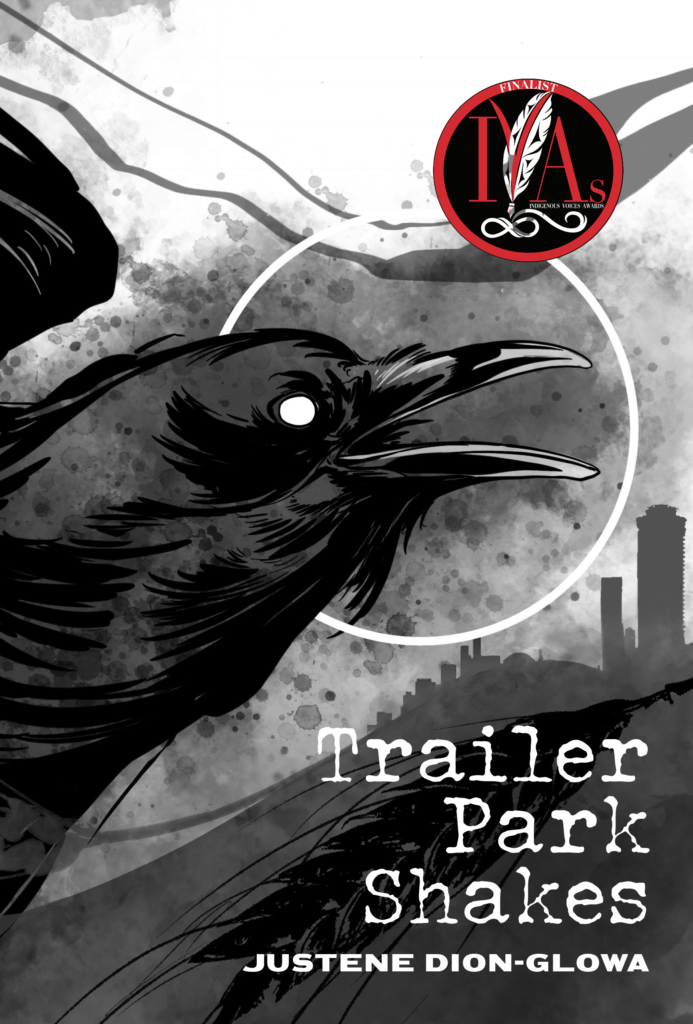
A Queer Métis poet who is intimately familiar with the ways in which oppression and impoverishment go hand-in-hand, Justene Dion-Glowa is the kind of poet who speaks to and of a world I know intimately well. Here, you won’t find any of the casual pretentiousness of all kinds of poets with MFAs from Ivy League school, but you will come to understand a few things of what it is like to be targeted by so-called caring organizations and social services. You will also see some of the ways in which life rises up precisely at the places where Death is brought to push down most heavily. I enjoyed these poems.
13. Gay, Ross. Be Holding: A Poem (2020).

I generally don’t go in for “long form” poetry, but Ross Gay’s extended meditation on Julius Erving (Dr. J), and how that leads him into some truly beautiful poetic reflections on individual and collective experiences of being Black in a America—an America where pictures of Black people from Dr. J dunking, to Stanley Forman’s “Fire Escape Collapse” must always be engaged critically (if at all?)—gripped me and held me all the way through.
14. Howell, Christopher. Love’s Last Number: Poems (2017).
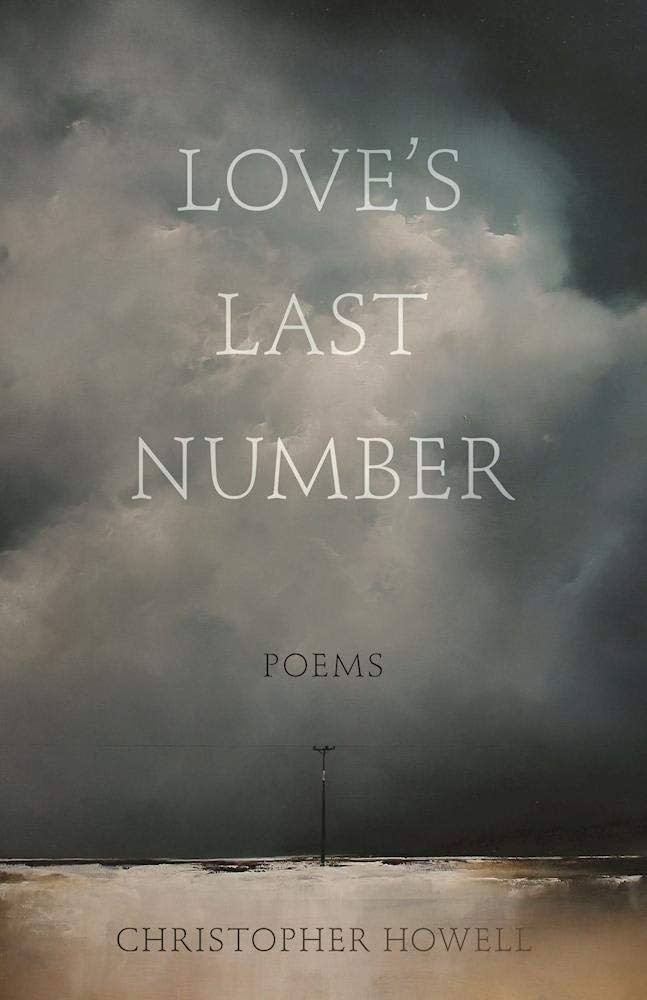
Trying to write a review of this collection four months after completing it is a futile effort. Some poems are for you. Some are not. These ones were not for me.
15. Lahaye, Anita (series ed.) and Bardia Sinaee (guest ed.). Best Canadian Poetry 2024 (2023).

I said most of what I have to say about “best of” collections of poetry last month. I read this one to continue to get a sense for what’s out there and considered “best.” I really liked some stuff and really wasn’t into some other stuff. No surprises there.
16. Hasham Beck, Zeina. O (2022).

Some poets make it through due to their ability to communicate intense feelings in everyday language. Other poets become prominent because of their wordsmithing, prodigious use of the OED, and novel ways in which they place words on a page. Some poets, in other words, gravitate more towards generate raw affect, while other poets are more like technicians or physicists working out formulas or manipulating signs in a way that wows their audience. All poets, of course, do both of these things to varying degrees and the sweet spot—the highly subjective spot where an individual reader says, “woh, this really speaks to me!”—has a lot to do with how each poet ends up balancing those two elements. For me, Zeina Hasham Beck’s poems are very close to that sweet spot. She obviously puts a lot of care into the technical elements of her pieces, but one cannot miss how much of her heart and soul and history she puts into her pieces. The fact that she also goes back and forth between English and Arabic in some poems (leaving the Arabic untranslated), also creates a vibe I really like (it reminds me of when I first began reading classic novels or big philosophy books when I was a teen and there would be quotations in French or German or Latin and they would not be footnoted or translated and it felt so magical and mysterious to me and, rather than pushing me away, pulled me deeper in). I like this in text reminder that, despite our desire to communicate, and our best efforts to communicate, there is still so much here that cannot be expressed or shared. Not really. But also, kinda. Recommended reading.
17. Nichols, L. I Am Only A Foreigner Because You Do Not Understand (2023).
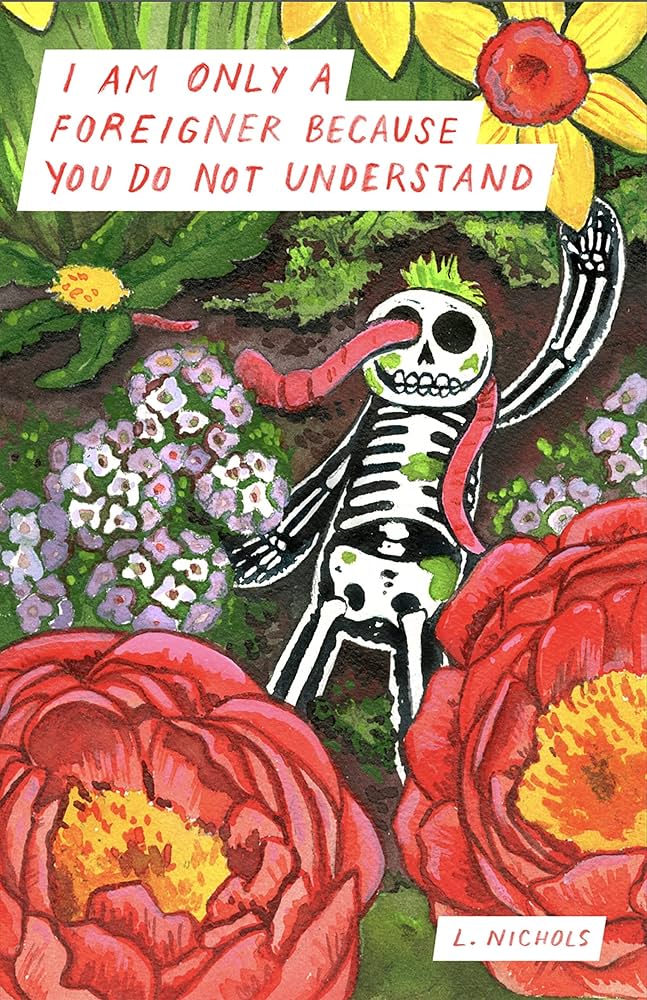
Beautiful art, cool aesthetics, and poignant story-telling unite in this graphic novel memoir (well, series of short stories) about being trans in a heteronormative overwhelmingly White and Christian context. I’m a big fan of a lot of art that is coming from the trans community these days (be it literary or visual or some other medium) and I’m very happy that I stumbled across L. Nichol’s work while passing a bit of time in my local library. Libraries are a great resource for graphic novels. They are one of the most expensive books (intended for public consumption) that you can by (given the cost of producing images in books and all that) but you can get them for free at the library! Isn’t that amazing? Support trans artists and your local library, friends!
18. Katin, Mariam. We Are On Our Own: A Memoir (2023 [2006]).
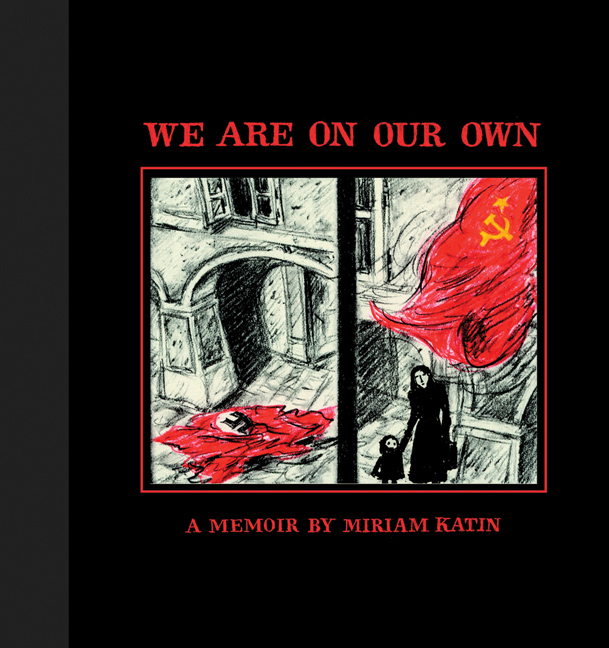
Mariam Katin’s parents were Hungarian Jews who narrowly escaped death during the fascist-inspired genocides of WWII. They were also religious believers and Katin of her own childhood as a participant in her mother’s flight, her struggle with her religious upbringing then, and then also something of her own status as a mother of a child of her own and her ongoing struggle with religious faith. It’s well-written and artfully designed and yet, given the ongoing Israeli genocide of Palestinians in the land colonized by the IOF, it’s hard to read some of the ways in which Israel is presented here (this graphic novel was first published in 2006 and then reissued in 2023 so we are well into the multiple escalations of genocidal violence that Israel has perpetrated against the Palestinians since the Nakba). Do Israeli authors have a responsibility to speak differently about Israel than, say, Canadian authors have about how they speak about Canada or American authors have about how they speak of the USA? No, I don’t think so. So is there a double standard at play by feeling expressing this discomfort about Katin’s work? No, I don’t think so. Both because I have expressed the same discomfort around any kind of Canadian or American patriotism or literary elisions, and because the Israeli genocide has been steadily escalating to the point of being more urgent and more immediately and overwhelmingly death-dealing than the ongoing grind of other colonial genocides. Those, at least, are my immediate thoughts on the matter.
MOVIES
1. Glazer, Jonathan. The Zone of Interest (2023).
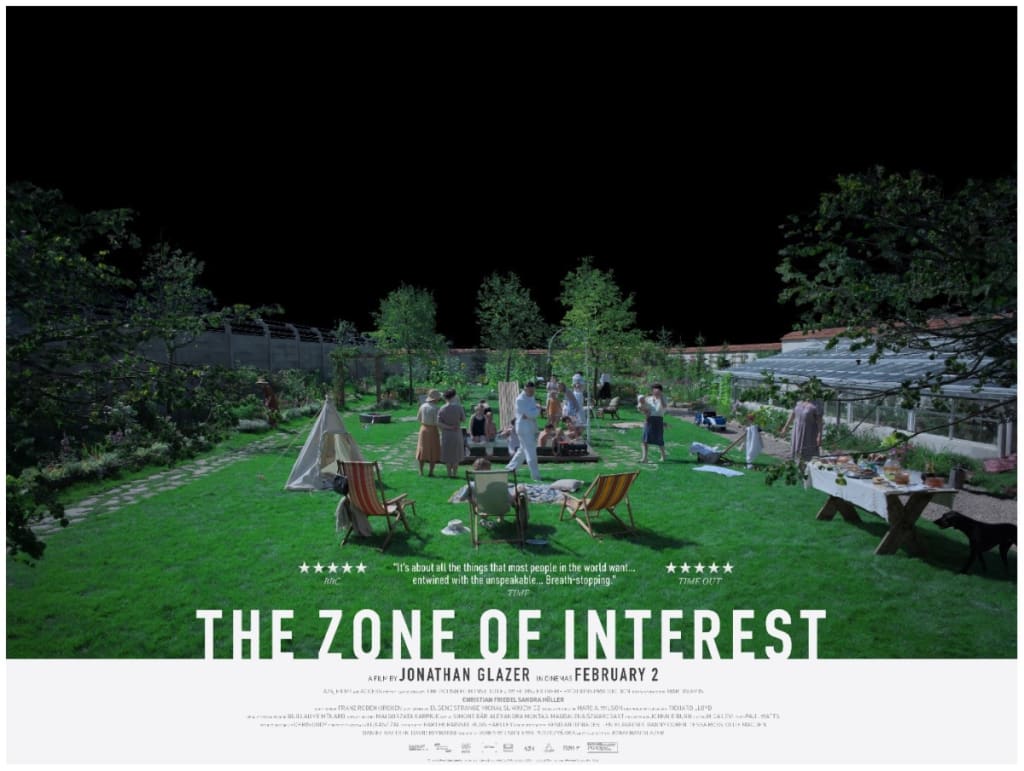
One of the best ways to communicate the inexpressible is to not try and express it. Any artist knows this. Any hiker knows that the mountain you climb can never be captured in a photo—no matter how large or high def. Any horror afficionado knows that the monster who lurks just outside the frame or page, the one that you sense but never see, is far more terrifying than whatever eventually shows up. And anyone who has experienced systematic genocide—be that via so-called Indian Residential Schools, trains and showers and ovens at Auschwitz, or waging systematic military campaigns against civilians in Gaza—knows that the only way to truly bear witness is to recognize the limits of what can be said or not said, described or not described, communicated or not communicated.
Jonathan Glazer’s Palme D’Or winning remake of Martin Amis’s novel (of the same name) is as masterful a presentation of what it means to communicate by not communicating, show by not showing, that I have ever seen. Perhaps this kind of film can only come after Alain Resnais’s Night and Fog (1956), Claude Lanzmann’s Shoah (1985) and The Last of the Unjust (2013), as well as Marcel Ophuls’s The Sorrow and the Pity (1969) and Hotel Terminus (1988), but it succeeds in ways far beyond what we saw in pop Hollywood fare like Schindler’s List (1993; directed by Steven Spielberg) or the reduction of genocide to kitsch that we see in Life is Beautiful (1997; directed by Roberto Benigni).
I had my doubts going into this because I did not like Glazer’s last critically-acclaimed film (Under the Skin [2013]), but it turns out my concerns were unfounded and this really is a masterpiece. Two moments in particular hit me especially hard (SPOILERS IN WHAT FOLLOWS). The first was the scene when Hedwig (the wife of Rudolph Höss) was showing the garden she had created to her mother. Living in their compound on the edge of Auschwitz, Hettie has created a beautiful pollinator garden with flowers and vegetables and potatoes and grape vines and trellises and a pool and a small gazebo and she created it out of what “was just an empty field. And here she is, in the midst of all this war and devastation and death, living from stolen wealth on stolen land and trying to embody values about getting back to the land, making something beautiful, and cultivating a garden and, damn, I wonder if in the next 80 years history will look back on me and my people and the little garden boxes we have in our yards on all this stolen land and say not, how beautiful but, my god, how monstrous.
The second moment, which really takes us into spoiler territory, is when Glazer suddenly leaps forward in time and shows custodial people cleaning out the display rooms and cases at what has been preserved of Auschwitz for present day tourists. This could have been a kitschy moment, sentimental, melodramatic or even voyeuristic in all the ways that the film is not but Glazer navigates it incredibly well in the midst of a scene where Höss is drunkenly leaving a party. It literally knocked the wind out of me. Extremely well done cinema on a subject where it is extremely difficult to do anything well.
Oh, and props to Glazer for drawing the connections to Palestine today and the genocide that Israel is committing there as we speak (and write) in speeches that he has subsequently given when receiving awards for the film.
2. Bertino, Bryan. The Dark and the Wicked (2020).
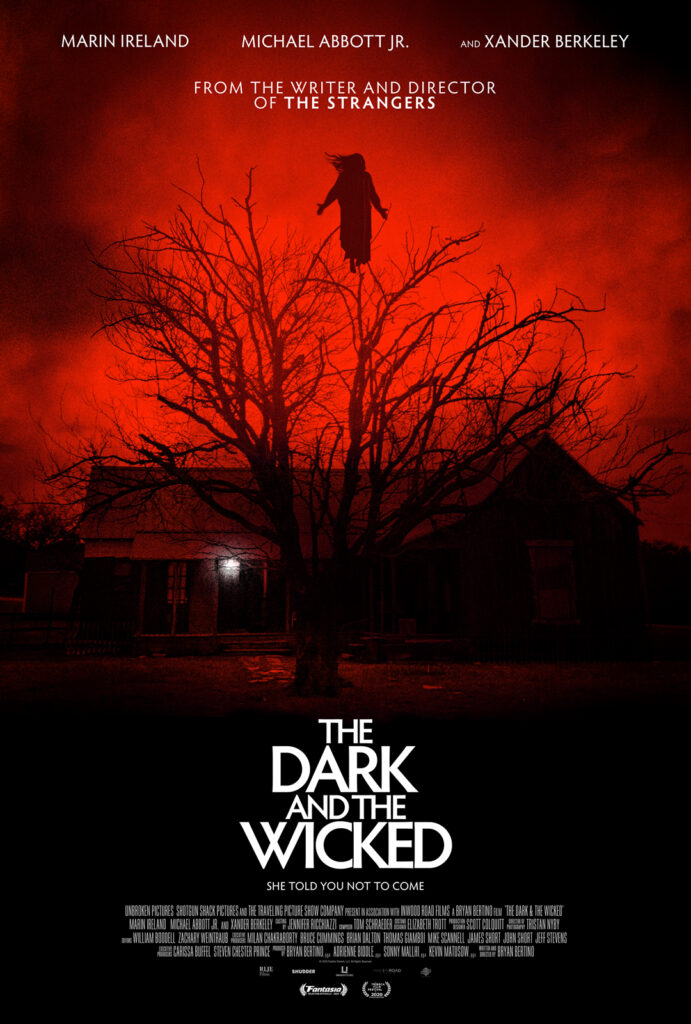
A lot of horror movies don’t really spend much time trying to get you to engage or connect with your characters. Characters are often props manipulated to generate a certain affect or to be torn apart in more or less creative ways. Story also tends to go to the wayside and vibe or mood is prioritized as well as rapid skipping from scene to scene in order to shock, scare, or amuse the viewer. The Dark and the Wicked is a story of a haunting that lacks well-developed character and plot but that doesn’t appear to view an absence of those things as a lack. Were one to describe it in those terms, one could say that it is a film about how Evil can inexplicable strike anyone and, when it does so, there is no hope of escape. If the Devil draws your card and comes for you, there’s nothing you can do about that. Essentially, then, this is a story that has been told hundreds of times before in this genre and Bryan Bertino’s retelling brings nothing that hasn’t already been done much better elsewhere. Yawn. Next!
3. McGuire, Bryce. Night Swim (2024).
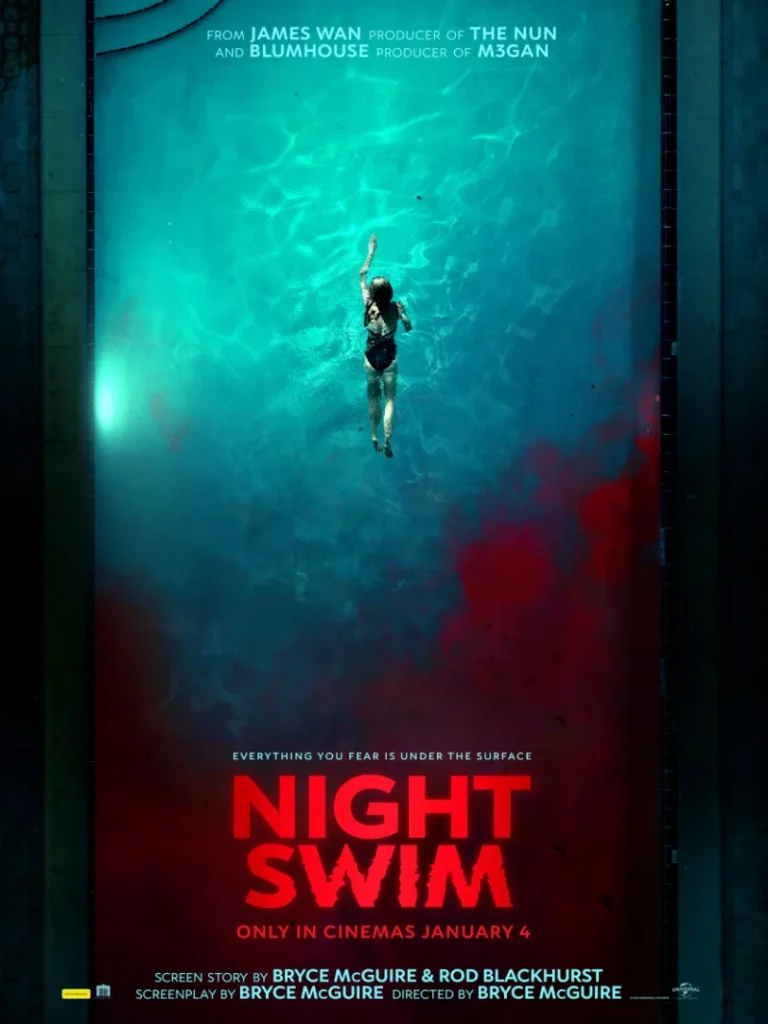
If you spend enough time reading reviews online, you get a sense for when the buzz that is fabricated around a film does not match the feelings you get watching the film. Granted, many reviewers have become little more than advertisers and trend towards hyperbole in order to generate clicks (revenue for the website/for themselves) and get people to go see the movie (revenue for the studio/kickbacks for themselves), but if you spend enough time navigating this terrain, you get a sense for when the buzz is different than the usual hype. When it came to horror movies dropping in 2024, Night Swim had a fair bit of buzz. Ooooo, a haunted swimming pool. Ooooo, the audacity. How wild. But all this buzz was very surface level. (I mean, how deep can a pool be? Not nearly as deep as McGuire wants us to think it can be.) The movie itself was pretty forgettable. Still, McGuire must know the right people. Another horror film coming out in 2024 has buzz because, guess what, Bryce McGuire, the auteur director of Night Swim, helped create it! So, yeah, it’s good to know to not bother with that one.
DOCUMENTARIES
1. Khreino, Dina. Fine Lines (2019).
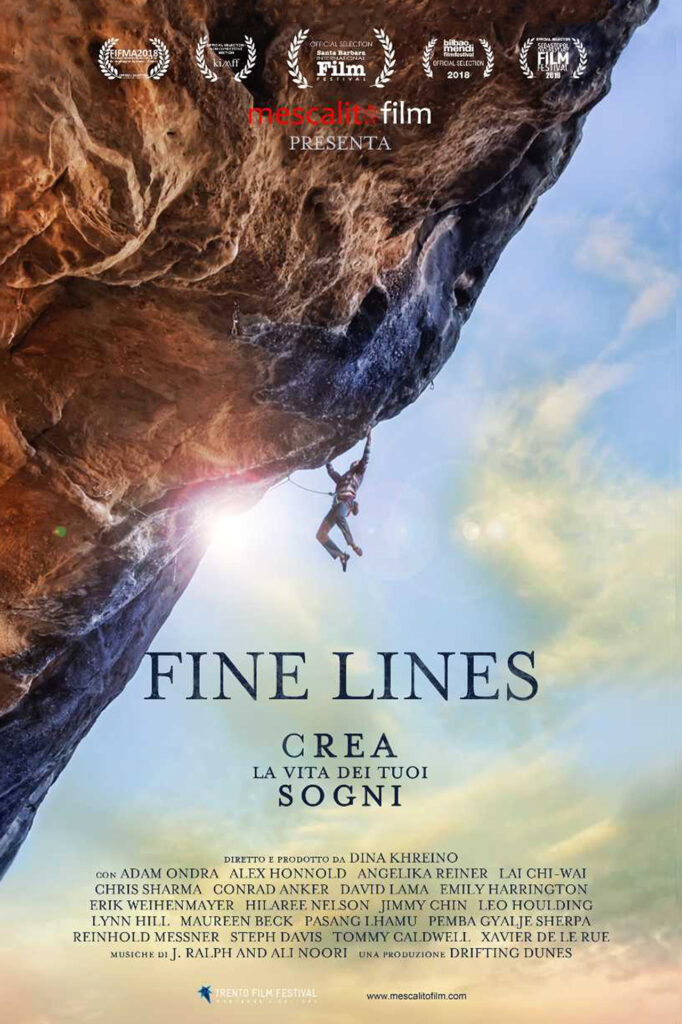
People who climb things like rocks and mountains see some beautiful places but I’m not sure that makes them any more profound when they reflect on things like life and risk and mortality. Granted, alpinism is the most lethal sport of all the sports but, I don’t know, every frontline worker I know has lost more loved ones than anyone I’ve seen in a documentary who has climbed Meru or Everest or El Cap. Anyway, some beautiful scenery here. I still can’t believe that there are people who live by mountains and that I’m not one of them. Sigh.
2. Hobkinson, Sam. Lover Stalker Killer (2024).

Meh. Netflix documentaries really seem to be going down the tubes. Hard to find anything that really hits on there these days.
3. Morgan, Neville. The Other Side of the Wind (2018).
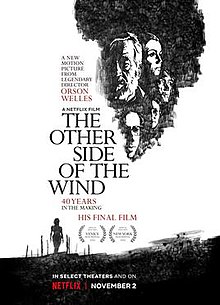
I’m over meta-documentaries about old dudes who are fucking assholes to everyone but who are, apparently, really these great tortured geniuses. Get outta here Orson Welles.
4. Connor, Eric.The Soul in Peril: The Ezidis (Yazidis) of Iraq (2015).
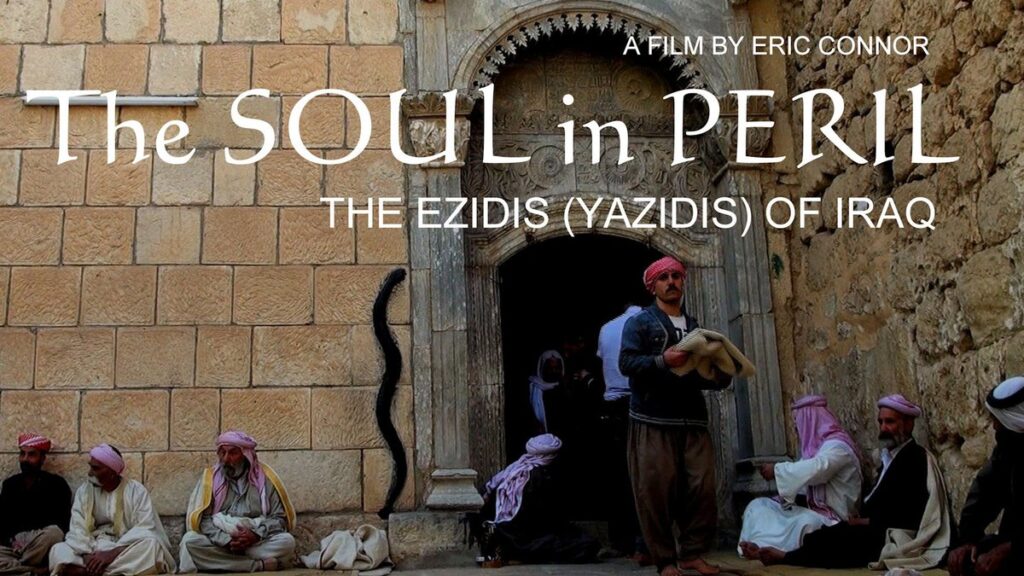
The Yazidis have an absolutely fascinating and very old oral- and music-based religious way of life. This documentary gets into some of that although I don’t think the director or the funding allowed this story to be told nearly as well as it could have been. Nonetheless, an interesting glimpse into just one of the truly distinct, beautiful, and encultured ways in which people go about telling stories about themselves and the world.
5. Haptas, John and Kristine Samuelson. Life Overtakes Me (2019).
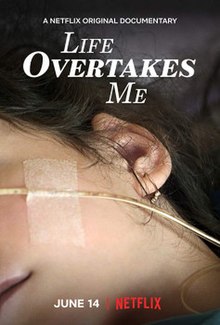
After the Iraq and Syrian wars, many Yazidis (already a persecuted minority) were driven from their homelands. Some ended up in Sweden as refugees. Some of those refugees, especially children and teens, ended up developing a strange coma-like syndrome where they gradually slipped away from consciousness and active engagement with the world. What made this especially unusual was that this happened to numerous people in the same community. Haptas and Samuelson mostly tell this as a story of trauma, displacement, and also resilience and survival—which connections being made between physical health symptoms and how a person is exposed to precarity, oppression, marginality, and violence (both in one’s homeland and as a refugee within uncertain status in a strange land). I felt like the directors could have dug a lot deeper into the psychology and symptomology of oppression, but this was more of a surface presentation.
6. Nizeti, Joseph and Gisela Kaufmann. Fungi: Web of Life (2023).

A fun movie about fungi from everyone’s favourite fungi fun guy, Merlin Sheldrake. Nothing groundbreaking or new here for anyone who has been reading or watching any of the other very good stuff that has been coming out about fungi these days (including Sheldrake’s book), but it’s fun and beautiful and shows some pretty things that made me say wow and remember a little more about why the world is a beautiful place. Which is something worth remembering given how people are peopling these days. Or, more specifically, given how hellbent rich people are on devastating everyone and everything else in order to increase the size of their treasure hoards.